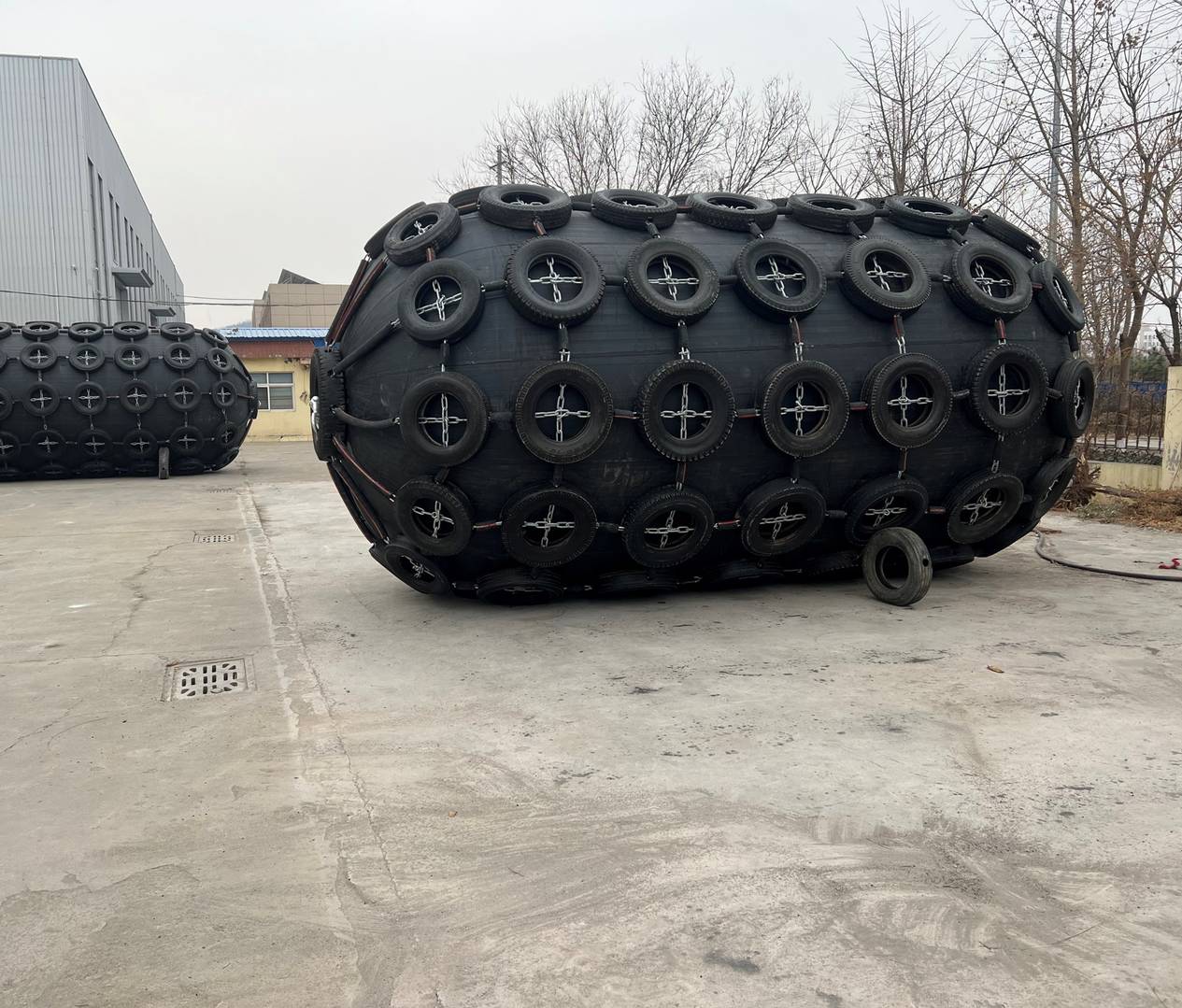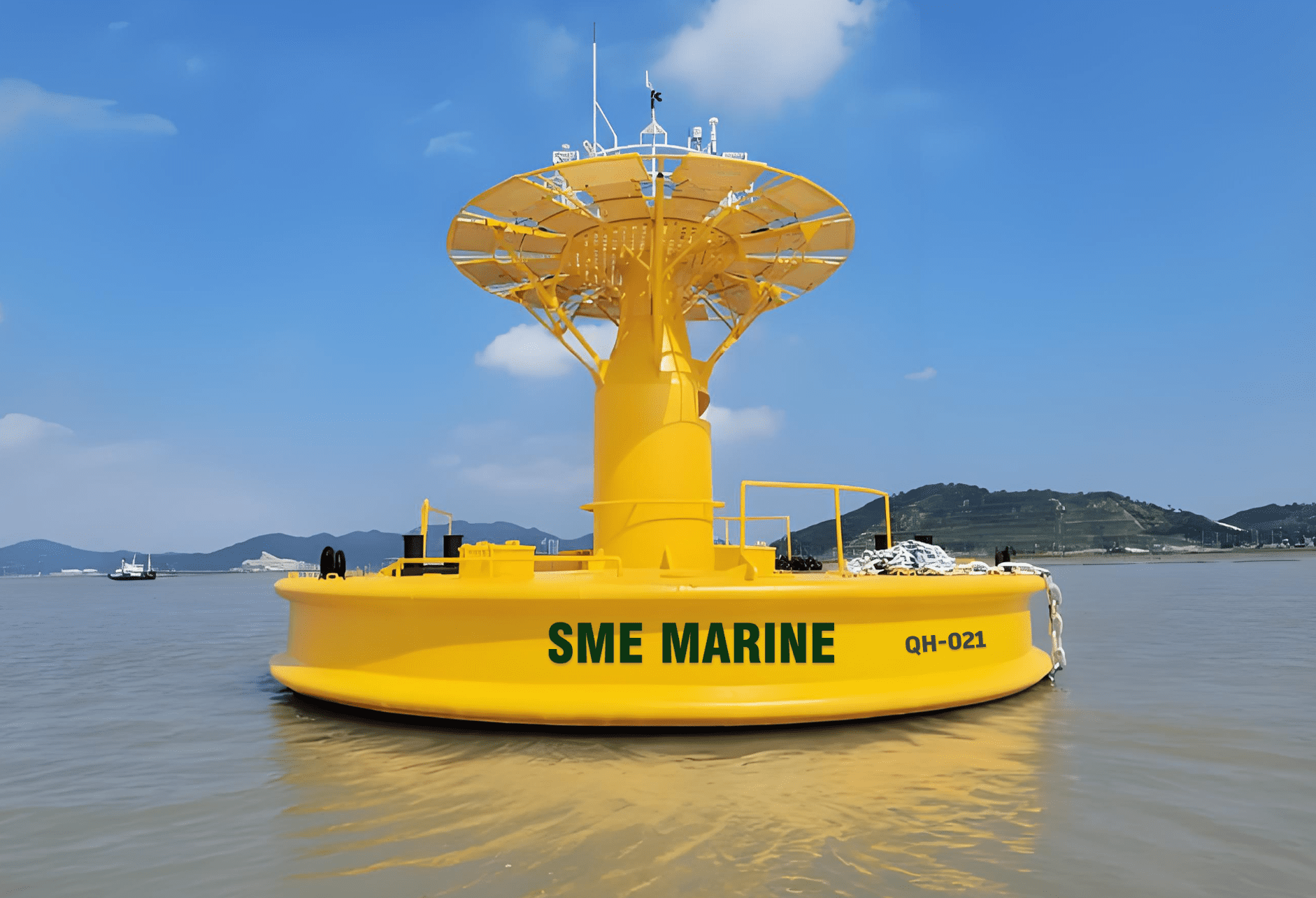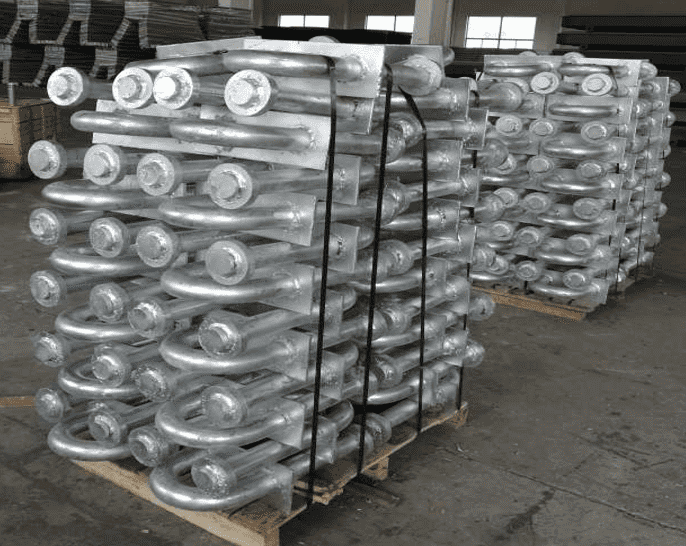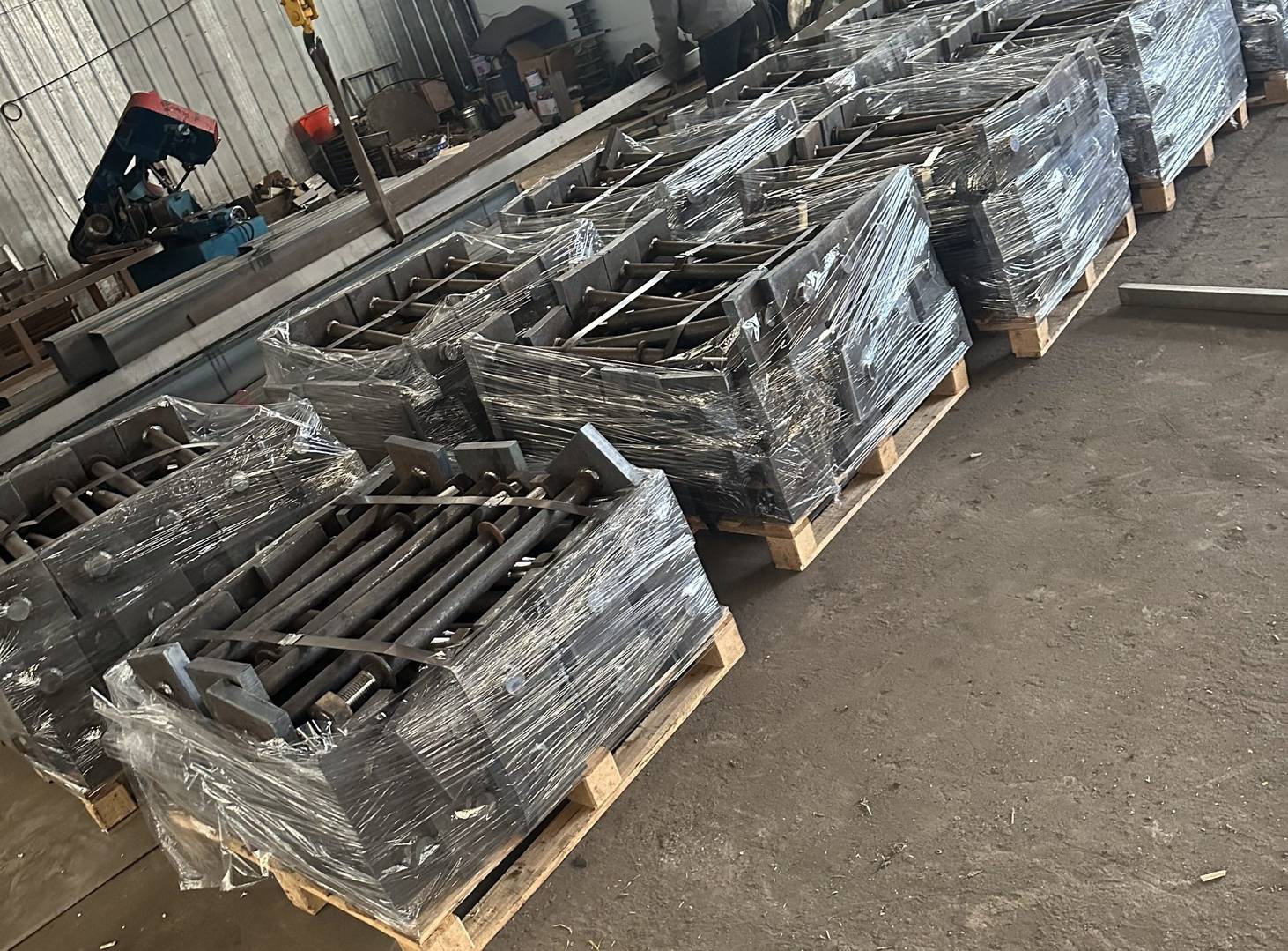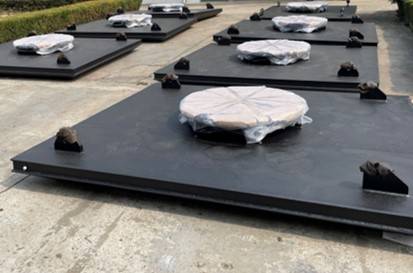Pneumatic Fenders – Large and Efficient STS Protection System
SME Yokohama pneumatic fenders feature essential components such as inner rubber, outer rubber, steel wire mesh, and an air valve. These parts are bonded through high-temperature vulcanization, creating a strong and durable structure. The fenders deliver excellent impact resistance, fatigue strength, and long service life. They also offer superior thermal stability and adhesion, ensuring reliable performance in harsh marine environments.
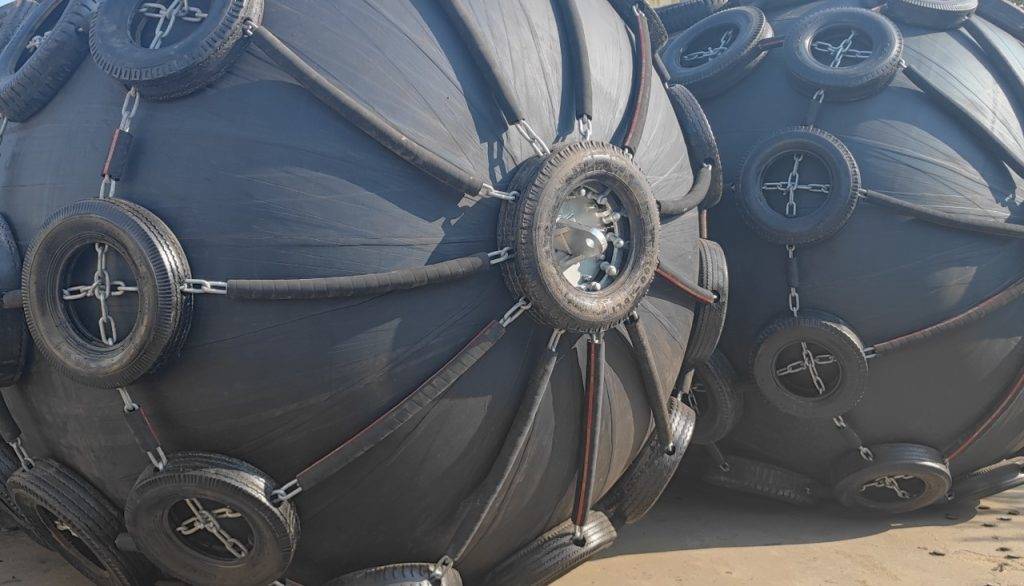
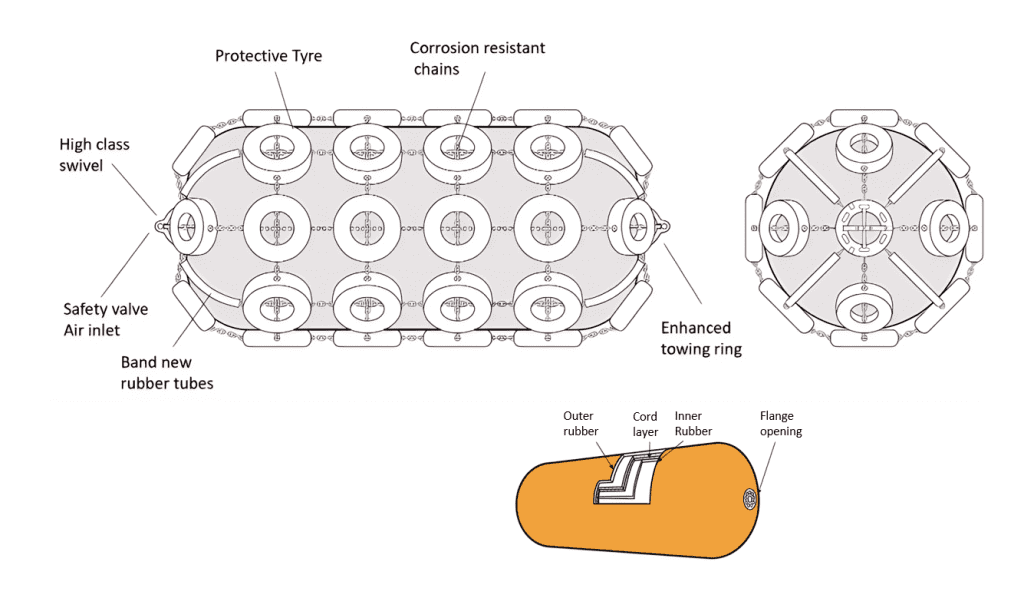
Pneumatic Fender Types
Sling Type
The sling floating pneumatic fenders are constructed from multiple layers of durable rubber reinforced with synthetic tire cord plies. These robust designs combine flexibility and strength, ensuring reliable performance even under heavy-duty conditions. Their exceptional resilience effectively protects vessels and port structures during docking and mooring operations.
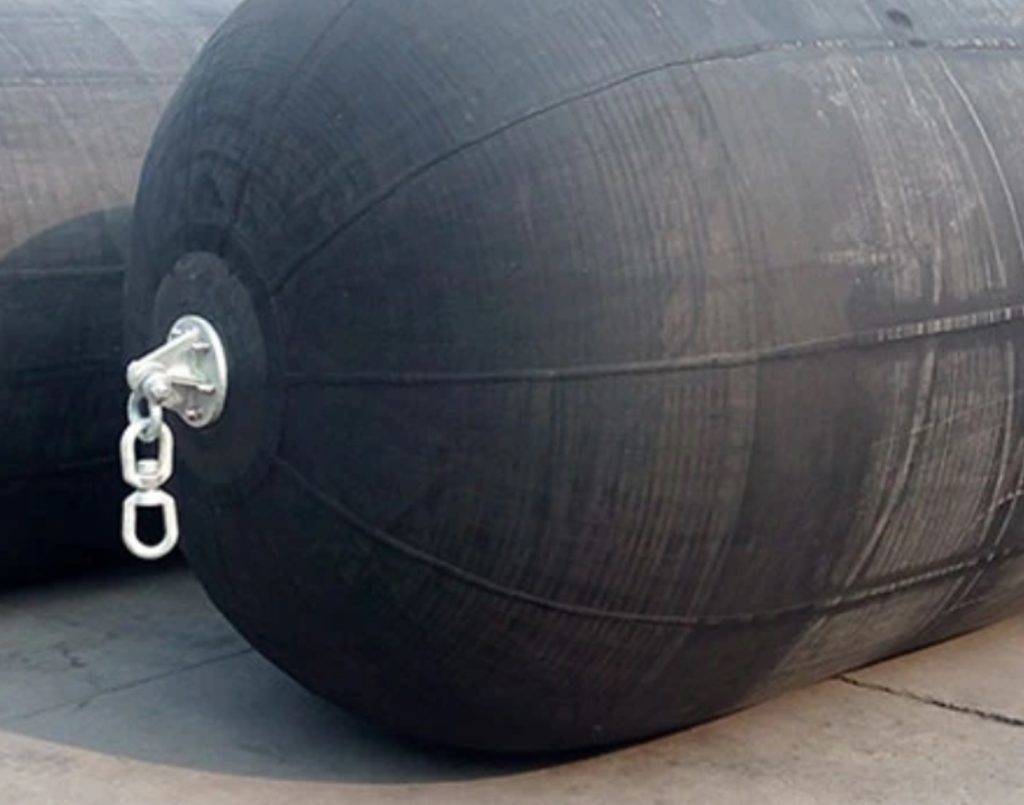
Tyre Net Type
Tyre net fenders have a pneumatic rubber core surrounded by a protective mesh made from tire material, linked with chains. The rubber core absorbs impact energy efficiently, while the tire mesh and chains enhance abrasion resistance. This combination improves energy absorption and ensures more even distribution of forces during vessel berthing.
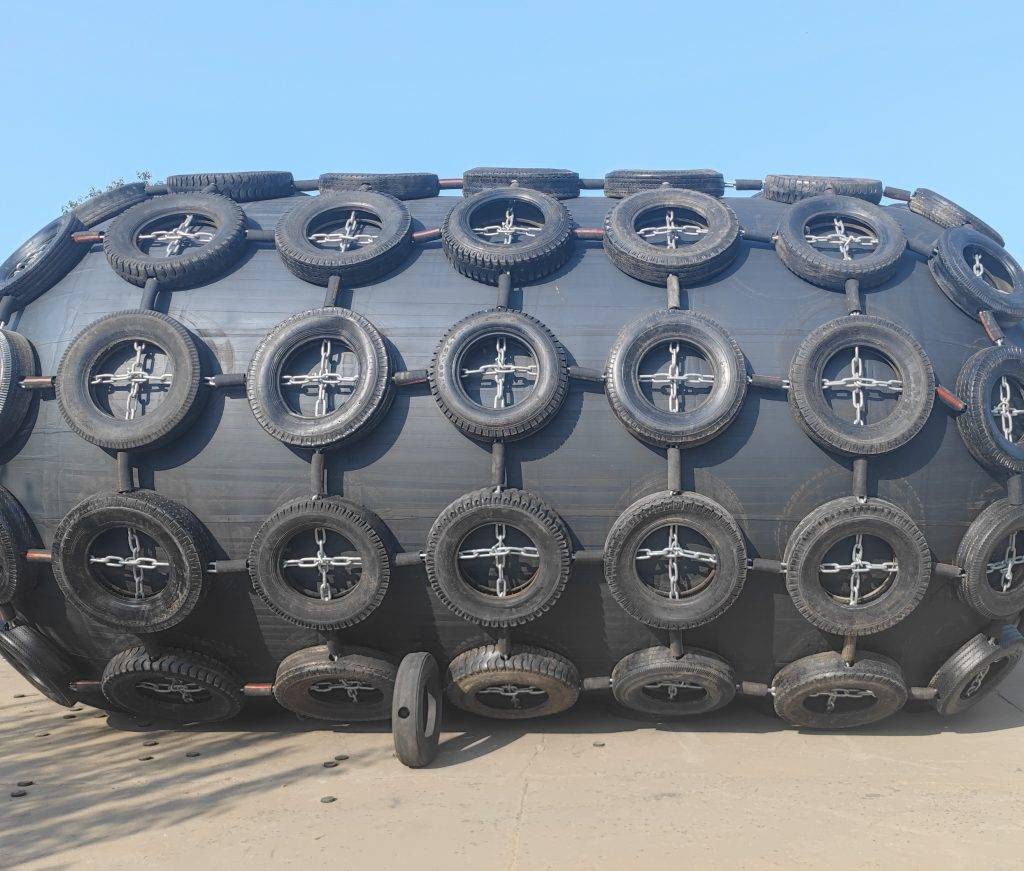
Proven in practice

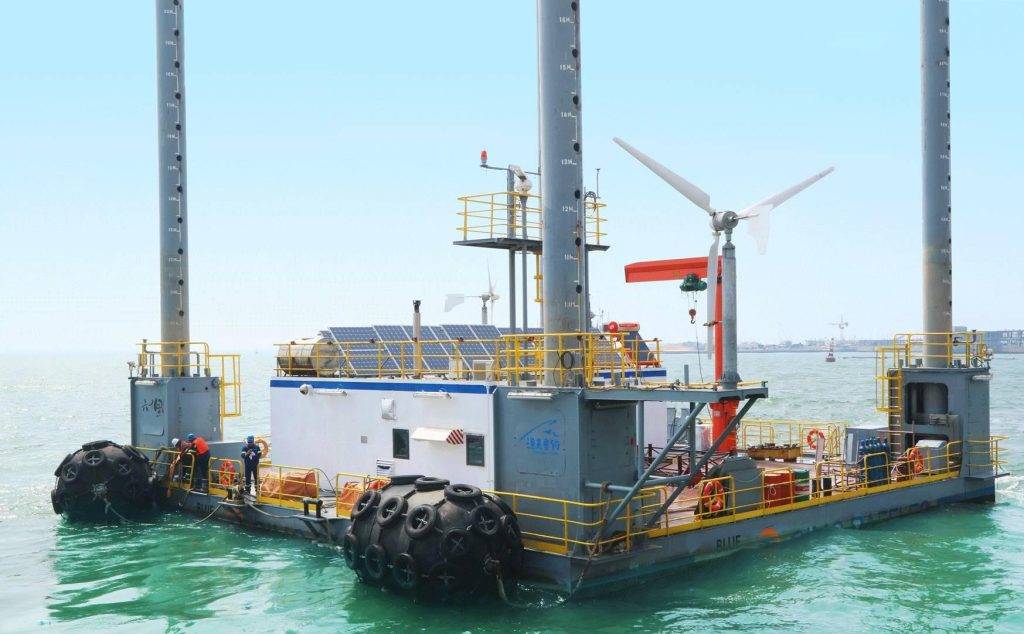
Yokohama Pneumatic Fenders - FAQ
1. What are Yokohama Fenders and how do they work?
We use Yokohama Fenders to absorb impact during ship-to-ship (STS) operations and at port berths. The internal air compresses on contact, protecting vessel hulls and dock structures effectively.
2. Advantages for STS Operations
These fenders deliver high energy absorption and low reaction force. They adapt to frequent berthing of large vessels, reduce hull damage, and extend fender lifespan.
3. How Yokohama Fenders Absorb Energy
When a ship contacts the fender, the air inside compresses and disperses energy. In addition, the polyurea coating reduces friction and improves wear resistance, protecting both the fender and vessel.
4. Materials and Durability
We construct fenders from high-strength rubber, reinforced fabric, and a polyurea coating. This combination ensures corrosion resistance, UV protection, and long-lasting durability.
5. Choosing the Right Fender Size
You should consider vessel tonnage, berthing speed, berth dimensions, and currents. Calculate the ship’s kinetic energy to select the correct diameter, length, and air pressure.
6. Applications Beyond Ports
In addition to port berths, you can install Yokohama Fenders on offshore platforms, floating docks, and mooring pontoons.
7. Installation and Maintenance
We attach fenders using wire ropes, chains, or brackets. Regularly check air pressure, inspect rubber and polyurea coatings, and ensure all hardware is secure.
8. Comparison with Foam-Filled Fenders
Pneumatic fenders provide higher energy absorption and lower reaction force. Foam-filled fenders resist punctures better but exert slightly higher force. You can also apply polyurea coatings to both for extra protection.
9. Environmental Factors
High-quality polyurea coatings protect fenders from saltwater corrosion, UV exposure, and extreme temperatures. Regular inspection keeps them performing optimally.
10. Customization Options
We customize fenders’ diameter, length, air pressure, and structure based on vessel size and berth requirements. Adding a polyurea coating enhances wear resistance and corrosion protection for heavy-duty applications.

